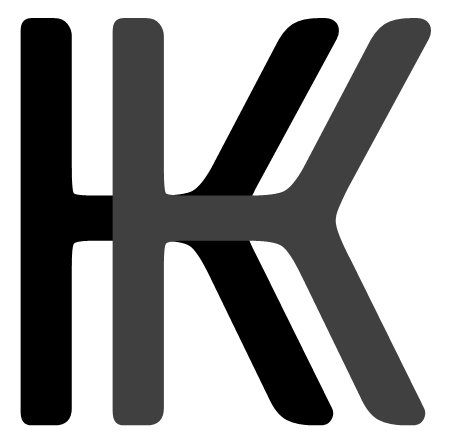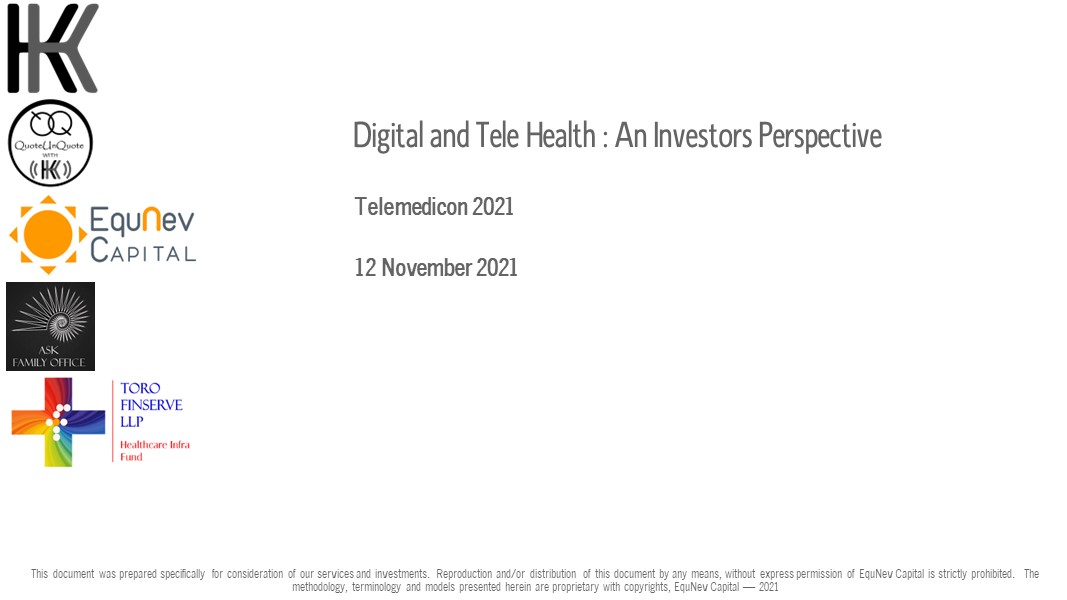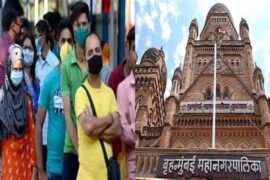My Key Note Address at the TeleMedicon 2021
Tag: Telemedicine
Telemedicine
That’s Lazer Sharp Vision, Literally!
Background
Perfect human sight is the greatest gift that a man can get. Years ago, I remember on one of my Rotary Eye Camps in a village near Bangalore, an old lady came to the Eye Camp with the help of her assistant holding her and guiding her to take the steps due to poor vision. The doctors checked her eyes and gave her a pair of spectacles. On wearing the spectacles the lady was overjoyed and filled with tears. She could see perfectly which she had not for years. Her dependency on others and quality of life improved immediately. This incident bought emotional tears to all the people around her. Like the old lady, there are millions of Indians who have poor quality of life due to lack of proper sight as they cannot afford proper spectacles to correct their sight. I seem to be amongst the more fortunate ones who can afford the luxury of sight correction.
My Issues with Hypermetropia, Myopia and Presbyopia
As far as I am concerned, I have always tried to maintain my eyes inspite of long-distance sight (hypermetropia) correction from my teenage years. As I aged (presbyopia), the complexity of near-distance (myopia) reading and long-distance sight have emerged. My lenses that Essilor fitted to combine both of these into one lens in a spectacle resulted in near catastrophe while driving on the highway. As a result I preferred to maintain two sets of spectacle for hypermetropia and myopia. With presbyopia, I have to fit new lenses as the vision for hypermetropia and myopia keep changing. This means a new set of spectacles every year or so to maintain proper vision.
My Experience This Time Getting Vision Correction on Digital
Every year, I visit the optometrist around the festive season to get my vision tested and procure new set of spectacles and lenses as per the advise of the optometrist. Given the lock down situation, I thought of procuring the spectacles through the digital online platforms like Myntra, LensKart, Titan Eye and Amazon, etc rather than shopping for at the physical optician stores. I wanted to try out Lenskart as my daughter had bought two pairs of spectacle recently and was a very loyal customer of them. While all the catalogues of Myntra, Titan Eye and Amazon offered just the spectacles, Lenskart offer the spectacles and a zero-powered bluecut and anti-glare computer lenses fitted along with it. Similar spectacle designs on platforms other than Lenskart turned out to be cheaper as Lenskart was loading the price to the lenses additional. I needed powered lenses to be fitted at an additional cost and throw away the lenses already fitted with Lenskart spectacles.
My WhatsApp Interaction and Talk with Amit Chaudhary of Lenskart
Pissed off with the experience, I WhatsApp Amit Chaudhary, Founder of Lenskart. That’s when I realized the business model of Lenskart versus other digital and brick and mortar opticians out there. Here are some of the excerpts of my telephonic conversation with him
- Lenskart is the largest AR eyewear venture in the world
- Over USD 150 mil of eyewear is sold by them through their platform and lenses are manufactured and fitted through their fully-automated robotic facility
- AR technology and fully-integrated robotic manufacturing facility makes them the cheapest provider of eye wear in the world due to the scale
- They are targeting a total addressable market of around 1.5 billion eyes in India
- They are therefore integrated to provide the full solution of spectacles and lenses as operationally there are challenges of product warranty when customers buy spectacles from them and fit the lenses outside at a local opticians.
There is a stand out quotes that while talking with Amit that summarized their business model
“We are the Maruti of the eye wear business. Customers like you form the top 10% who are the Ferrari’s who would like spectacles not only for functional, but for esteem value”
I like the lazer sharp vision of Amit. As entrepreneurs like him who raise lot of VC and PE capital at some time want to dominate and move away from their core business model and value proposition in the pressure for growth, profitability and valuations.
Although Amit offered to service me as an exception, but that is not core to their way of working. Consumers sometimes miss out on this and crib and bad mouth the start ups on social media, missing out how these start ups are making the world better by offering sight to millions by being cheaper, better and faster. Remined me of the old lady in tears who could see properly and so did I on Amit’s perspective.
Kudos to such start ups which are bringing in technology and production techniques to reach scale!
Should We Impose Complete Lockdown Now?
Background
Our Supreme Court has directed the Central and state governments to consider imposing a ban on mass gatherings and super spreader events. “We would seriously urge the Central and State governments to consider imposing a ban on mass gatherings and super spreader events. They may also consider imposing a lockdown to curb the virus in the second wave in the interest of public welfare,” the SC said.
Let us understand that the national lockdown in the first Chinese Wuhan Virus Wave was to create the requisite infrastructure and capacity to ensure that the country does not go into a crisis and the 7-day moving average (7DMA) of infection does not increase the stipulated doubling rate of 1 day. Moreover, the cost of lockdown to the economy for a single day of lockdown is around USD 6.0 billion (INR 45,000 crores approx).
In the second wave, the issues are different. We have our 7DMA of infections is much lower and the doubling rate is much higher. Moreover, as the immunization drive picks up, we will see the two parameters of 7DMA and doubling rate become even more manageable.
So the issue in front of us is, should we impose a complete lockdown and for how long taking cognizance of the Supreme Court directives.
How Far Are We From the Peak in this Second Wave?
In order to arrive at a predictable view of how long should India and its states go into a lockdown and even out the daily economic losses to the country, there are several parameters which we need to consider:
- Second Covid Wave in 12 countries before India
- Second Covid Wave Peaks in Different States and Cities in India
- Covid Immunisation strategy
Second Covid Wave in 12 Countries before India
we can learn from the other countries which have gone through the second wave before India. Based on the learnings from these countries, our Central and State Governments can work out a formula to impose lockdowns and unlockdowns without hurting the economic activity in the country. The table below gives out the duration of the second wave (in days) and % of population that was infected during the Second Wave:
While it is pretty apparent that each country reacted to the second wave differently. The chart below shows how effectively did each of the 12 countries manage the second wave.
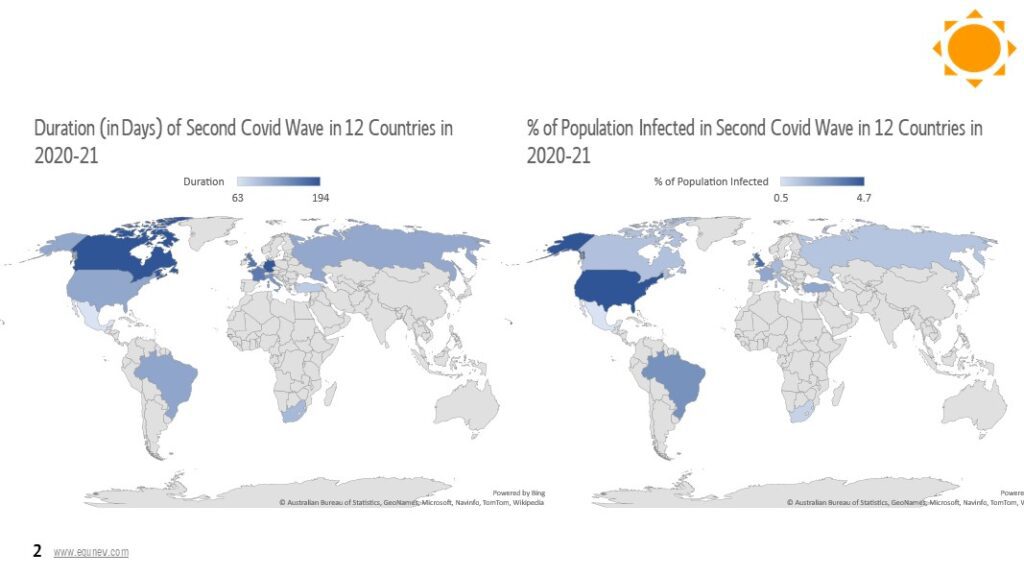
Mexico, Turkey, Israel has the second wave duration of less than 100-days, while Germany and Canada had a duration of over 200 days. The peak of the Second Wave was around 120 days (ie 4 months) as an average). The average population that was infected in these 12 countries was around 2.5%.

This is valuable information and analysis for us to predict where India is in the second wave.
Second Covid Wave Peaks in Different States and Cities in India
Maharashtra including Mumbai was the first state to begin with the Second Wave in India. It has already seen the peak and is around the global average of around mid-point of the 120 days wave (ie. 60 days). We will see India as a country peaking by mid-June 2021, unless we solve all the infrastructure and logistical nightmares which some cities like Delhi is undergoing.
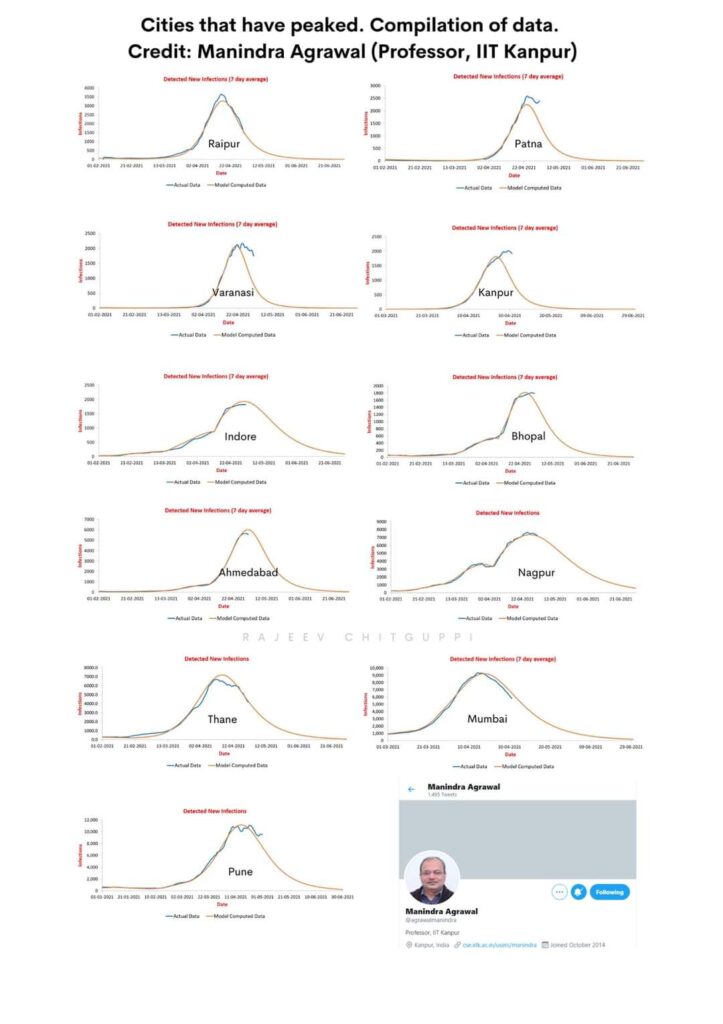
The other silverlining is that many other Indian cities are already in their peaks. An interesting analysis by IIT Kanpur Prof Manindra Agrawal shows.
Covid Immunisation Strategy
As I have already written, our Covid immunisation strategy needs to be reworked. It’s not the political compulsions and broad headlines. We need to immunize over 15% of our population by Mid-May 2021 which we have not yet achieved and most likely going to miss the target for the total duration of the second wave and the imposition of nation wide lockdown durations to recede.
Therefore, the opportunity costs for the country in reducing the duration of the lockdown in the second wave is huge provided we implement our covid vaccine immunization strategy and coverage astutely. Invest, invest, invest in immunizations and make it free for all as an incentive. The rest the statistics at the end to the lockdown will reveal.
No Courts in the World Bear the Economic Outcomes of the Country based on their Judgement!
Yeh Hai Bombay Meri Jaan, Saab Hain Covid Se Paresaan!
Preamble
Earlier in the last decade I was part of the Healthcare Committee of Bombay First which was assisting the Maharashtra Government in the Mumbai Masterplan 2045. One of the key concerns and recommendations made by the Committee was building the healthcare infrastructure for the city, Mumbai lags behind in beds per 1000 population with several key peer Indian cities such as Gurgaon, Delhi, Chennai, Hyderabad and Bangalore. Alongside the shortfalls in hospital beds, there is also a shortage of healthcare professionals, equipment and infrastructure needed at various levels in the healthcare delivery supply chain. The second wave of Covid in the city has once again proved that the healthcare delivery to the Mumbai residents is again in short supply, be it beds, healthcare workers or vaccines. With the crisis looming large, the city is on the brink of a long second lockdown. Without delving into the politics and finger pointing, I want to point out the gaps.
The Gaps in Healthcare Delivery and Covid Response in the City
Hospital Beds Shortage in Skewed Distribution Geographically
In Early 2000s, Mumbai has around as per the Bombay First report, 24,984 beds. As per the recent Mumbai Municipality report, there are 24,039 beds in 2021 in Mumbai. In other words, hospital beds have actually reduced over the last 20 years in Mumbai. It is obvious that many nursing homes have shut down as the doctor/owner have found it lucrative to monetise their nursing homes to commercial real estate. As a result, Mumbai is amongst the worst cities in India with a bed to population ratio of 1.17 beds per 1000 (as against the WHO norm of 3 beds 1000). It was 1.63 beds per 1000 in 2000. Moreover, these beds have been unevenly distributed in Mumbai. South Mumbai has around three-fourths of the total beds in the city which was the case in 2000. This means as the city expands to the suburbs, no additional bed capacity has been augmented in the last 20 years in Mumbai.

Second Covid Wave in Mumbai and Skew in Spread
As per the recent Mumbai Municipality Report on Covid, the highest increase of positive Covid Cases in the Western and Central Suburbs of the City in the last 7 days. (See the chart below). While the alarming rate of growth of covid positive cases in these wards would take less than 28 days to double the cases. As compared to 35 days as an average for Mumbai city. While the response to Covid is in the Western and Central Suburbs, the concentration of healthcare facilities is predominantly in South Mumbai. While this is leading to a lot to movement of people seeking admissions to hospitals for Covid treatment.

Action Plan for the Future
The cost of real estate in Mumbai very prohibitive for private healthcare operators to set up greenfield hospitals unless there are regulations to incentivise them. Various recommendations provided by our Committee is not been implemented on the ground. The Covid Pandemic is a wake up call for the City administrators to buckle up and bit the bullet to accelerate healthcare infrastructure in the city by our planners for the future.
Sustainability Heat Map of State-level Digital Health Initiatives in the New Normal in India
Preamble
The Covid Crisis has opened up many digital health initiatives by many State Governments as a crisis management initiative. Over 300 such initiatives were launched by various State Governments across India for management of Covid as part of their charter for health management. As we shift to the new normal, many of these efforts by the State Governments would either shut down or pivot into general health management initiatives. We caried out an exercise to create a sustainability index on whether they would continue or not.
Approach and Methodology
We carried out a nationwide survey on the Covid-based digital health initiatives. The information was collected through State Health Missions, State Health Department, their websites, doctors connect and various reports. Out of the 300 and more initiatives, we narrowed down to around 75 key initiatives across the States. An analysis of the functionality of these digital health initiatives by the State Governments can be categorized into eight broad categories. These are:
- Home Quarantine Tracking
- Travel/Tracking
- Covid Chatbot
- Covid Testing
- Telemedicine
- Drones/Robots/Surveillance/Tracking
- Health Worker Management
- Information/Fake News
These initiatives were accessed for their sustainability heat map on the following parameters:
- Digital applications
- Master data and architecture
- Pivotability
- New normal use cases
- Costs and capital for sustainability
- Management in the new normal
- Private sector partners
- Techno-commercial viability
- State regulatory issues
- Best practices for Covid management
- Others
State Covid Initiatives Sustainability Heat Map
Based on the analysis, we have drawn down a heat map as shown below:

Our Conclusions
Based on our heat map, we see only 15% of the current applications that can sustain in the new normal. While we understand that these digital health initiatives were hastily drawn up in early-April 2020, the state health budgets and other issues to get these applications off the ground to create quick citizen impact, over the longer-term such digital health initiatives need to be thought through for a longer time frame as was discussed in my podcast The Promise of Digital Health: For Everyone, Everywhere. QuoteUnQuote with KK – Kapil Khandelwal (KK)
However, this time frame was a solid testing ground for how successful can digital health be in various states of India as healthcare is a state subject. Based on the information, Digital Health in India, holds promise.
From Telegraph Road to US$50 Billion Digital Health Silk Road
Preamble
There have been very positive developments for Indian healthcare on the digital front. First, the Indian Telemedicine Guidelines and then the National Digital Health Mission (NDHM). From various think tanks and industry bodies there have been various numbers been project on the incremental value that these will create for the Indian economy. While it is wishful to conjecture the US$ 250 billion dollar impact, what hums in my mind is the Dire Straits famous 14-minutes “Telegraph Road” song. At that time, Mark Knopfler was reading the novel The Growth Of the Soil by the Nobel Prize winning Norwegian author Knut Hamsun and he was inspired to put the two together and write a song about the beginning of the development along Telegraph Road and the changes over the ensuing decades. Using the same analogy, the development of India’s Digital Health Silk Road is feasible on the back of the physical and human healthcare infrastructure. So let’s tune in to my song!
Song Intro – India’s State of Wild-Wild West Healthcare Underdevelopment
India is a country of paradoxes for healthcare infrastructure. India has 18% of world’s population. However, it has around 18% of world’s diseases burden which is increasing. To service this diseases burden, this increasing disease burden, India has only 2.4% of world’s land mass and needs approx 0.01% of world’s land usage for health and well-being purposes. On the clinical manpower supply, India has 1% of world’s lab techs, 9% of world’s health workers, 8% of world’s nurses and doctors. To level up India to the global average, the total investment is approx $460 billion now (165 countries in the world had a GDP of less than $460 billion in 2018). (see Tedx talks My Presentations – Kapil Khandelwal (KK) To address the country’s healthcare needs within the constraints of capital, land and clinical manpower, homegrown solutions are required. At per capita healthcare spend of INR 4116 (USD 55), India’s per capital spend is growing @ 22% pa. However, India is amongst the lowest 4 countries (ranked 129) in the world on healthcare spend as per Oxfam’s latest Commitment to Reducing Inequality Index 2020 at 4% of GDP (against the globally recommended 15% of GDP).
Song Pre-Chorus – Healthcare Gold Rush to the Wild West due to Covid
Let’s set the context under which there has been an accelerated push for healthcare digitization in India. The Great Covid Lockdown. Elective healthcare were down by 70% across the board due to lockdown and priority to Covid affected. The healthcare industry started rumbling and requesting Government to come out with a bail-out package of over INR 50000 crs. Doctors needed to restart their practice through work from home or anywhere. The decade-long deadlock on the telemedicine act between Medical Council of India (MCI) and the Ministry suddenly cleared. There was a mutual agreement to develop the telemedicine road and to regulate the gold rush road to telemedicine in India.
Song Verse – New Digital Health Regulations
The actual verse of the telemedicine regulations in India was announced by the Niti Aayog and the MCI. The Prime Minister in his verse of Independence Day speech also announced the National Digital Health Mission (NDHM). The draft verse of the digital health regulation was available for the general public to review and critique. This was the back drop to the crescendo of the industry chorus on the digital health in India and the opportunity it offered.
Song Chorus – Industry Estimates and Reports
With the regulatory verse out in the public, the industry voice chorus on the real impact to the Indian economy initiated. One industry report estimated the pace of digital healthcare can unlock USD 200 to 250 billion in next 10 years in terms of primary and secondary impact to the nation’s economic value. These value-creation in the march to the wild west will be on three key roads:
- Road 1: From episodic care to wellness-oriented care
- Road 2: From volume-based to value-based healthcare
- Road 3: From siloed systems to streamlined processes
While such stratospheric estimates at a Concorde-neck supersonic speed of the digital health silk road to the Wild West is great for headlines for the chorus, let’s not fool ourselves with the history of what the retail (brick and mortar) and ecommerce underwent in the past decade which went super sonic with investments and valuations on digital retail commerce in India. I have been writing about various issues and roadblocks to digital health path in my various columns which are available at My Library – Kapil Khandelwal (KK)
Song Bridge/Solo – My Estimates on the Investments and On Ground Reality and Impact
For any song chorus there is also a bridge/solo that makes the real sense. Here is my view of the chorus. The last decade received around USD 500 million in different ventures of digital health which were cut-past healthcare business models of the West. The current technology spend on these is around USD 500 million per annum. For the USD 250 billion impact on the ground to be realized a straight forward deep healthtech investments of around 5% (around USD 12.5 billion) is to be right away with a gestational lag of around 3 years on a conservative 2x on valuations return and not on revenue growth. In other words, all the sum total of early stage VC money raised in 2019 globally will have to be directed to India and that too in healthtech. A tough ask and a pipe dream.
Let’s also focus on the available data sets which is the oil to run the digital health motorway in India that we currently have. Currently, India’s data sets on healthcare is of the Telegraph road era. These include information on radiology, EMR, labs, meds, monitoring, doctor exam, nurse observations, claims data, billing and transactions. This data set is available for the Bharat Stack 1 (the elite-12% of India’s population). The real driver for the growth is the Bharat Stack 2 (the next billion of India’s population) and 30-odd points of healthcare data (not under the current NDHM regulations) which will make the digital health silk road truly a reality. An incremental investments of USD 18 billion in deep tech ventures in next generation digital health ventures to create a true high-speed digital health motorway of the future.
Therefore to land the stratospheric Concorde of the chorus that were singing, we require a total of USD 30 billion of tech investments on the word go. Where is that sort of money? We still don’t know where this money raised will be invested and that is not the point we are belabouring. Taking that cue, we have been tracking around 150 healthtech ventures in our annual healthcare and life sciences investment heatmap on digital. We will need to create 10000s of ventures that can create the depth and width of healthcare apps for the next billion today!
Song Outro – The Rhythmic Orchestration of Capacity Creation in Physical and Digital Healthcare
While most songs orchestra fade and end abruptly, this India digital health silk road would need a different Outro to its song. On a conservative basis, we estimated that the overall India digital health silk road opportunity is valued conservatively at USD 50 billion as it currently stands with the different constraints in our physical and technology healthcare delivery system. This is on the back of three key multiplier effect on the Indian healthcare economy:
- Increasing per capita spend on health and well being of the next 1 billion population as disposable incomes goes up moving from the informal sector to formal sector in next 10 years
- Incremental 1/6th disease burden our population carries as compared to world due to the genomic make up and ageing population in next 10 years through alternative healthcare delivery models
- Emerging alternative digital healthcare delivery models that would play on the shortages in the physical delivery system as penetration and acceptance of mobile first delivery of healthcare services become mainstream and productivity of the clinical manpower is augmented by healthtech
Money for Nothing – Covid Vaccines for Free
Another Mark Knopfler hit which talks about the excesses of a rock star and the easy life it brings compared with real work. Between the Independence Day announcement and the Bihar elections manifesto announcement, there seems to be shift in the focus and the priorities it seems from our Rock Star Prime Minister. The Government would not have the funds to spend on the Digital Health Silk Road if it spends its budget on providing free Covid Vaccines to the masses.
Only time will tell how the orchestra and the song of the great India digital health gold rush will play out!
Excerpts of this blog published as an article in VC Circle:
